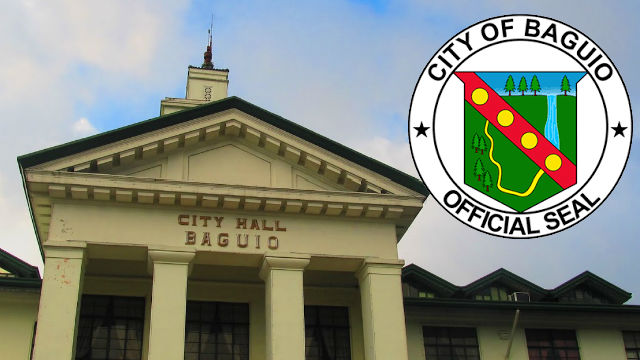Stunned have we been over the casual way with which 2019 had been let in.
Just as Usman exited out of the country, the casualty list over the typhoon’s visit had left much of the populace, let alone the government, in utter disbelief. Over 122 listed up as fatalities, scores wounded, and about 50 others still unaccounted for. The misfortune comes from landslides and floodings — expected for days prior to Usman — that took place just as the nation geared up for a festive welcoming hand for 2019. The misfortune is truly just that, a tragedy because for a puny storm that Usman was, who would expect it to wallop the stricken areas — principally CamSur, Albay, and Sorsogon in the Bicol Region with rains whose volume equaled a month’s rainfall. Till now, retrieval efforts are still ongoing, even as other hard-hit areas (Mindoro for instance) remain flooded and impassable.
Was it the holiday revelry that caught the victims, mostly from the ranks of the poor downtrodden, hapless and hopeless, that even their kinfolk had to scrounge for whatever can be had in the days following Usman? Were the storm signals and everything else that comes with Pag-asa’s alert advisories insufficient to make the people along Usman’s deadly path aware of the impending deluge? Were local government authorities doing their usual tasks, as expected of them, during an impending storm?
These are disturbing questions that need be raised, for the nation’s peace of mind, and more importantly, for the hard lessons that we must all learn. After all, all through the days leading to Usman’s ill-fated visit, we were all bracing for what appeared as a slow-moving weather system. Surely, Usman wasn’t one’s usual strong aberrations born from the seas, recalling stronger storms that have hit us these recent years. Surely, not of the magnitude and scale that Yoland, Ondoy, and Pablo were.
So, how come, in the aftermath, we’re all counting casualties, as if the numbers were not so appalling, as if the death toll from a puny storm were just common happenstance, as if the disaster that befell the ranks of the poor were just so commonplace. Haven’t we learned lessons from Ompong’s and Rositas’s fury just a few weeks back, when landslides catapulted from nowhere the towns of Itogon and Natonin into disaster signature names of common folks who were in the wrong place at the wrong time, even for the right reason?
Even now, disaster risk experts led by Dr. Mahar Lagmay of Project Noah (short for National Operating Agency on Hazards) have observed that the kind of weather information dished out to the populace, especially in storm paths may have to go through an urgent review to make the alert advisories reflective of the amount of rainfall expected to be dumped. Color signs just won’t do, he says, noting that yellow to red alerts may no longer be easy-to-understand terms when dealing with impending disasters.
If 2018 must be heeded, there’s much to look back for us to have a surer footing in our journey into the next. Everything worse has taken place — deadly landslides in our mountain communities two months back, our own city flooded in just a day’s time of relentless rains, that have left thousands of families simply hammered into deadly submission by onrushing mud, soil, and rocks larger than their pathetically situated shelters.
By and large, our collective fate seems to have abided by what occurred in 2017, auguring not much hope that 2019 will deviate from what seems to be a decade-long environmental script. Tough times indeed, with challenges from our changing climate becoming even tougher, much harder to meet, or even cope up with.
Even our climate savants, they who have been on vigilant shepherding all these years, have not been reassuring, given scientifically collated data from all over the world. Gravely disappointed, they all have been, that not much progress has been achieved these last two years in global efforts to bring down polluting gas emissions.
The bombardment of toxic fumes into the atmosphere has gone merrily on, as if tomorrow can well take care by itself. As a result, ocean temperatures have been on exceedingly merciless ascent, enough to breed the weather aberrations we’ve been having, enough to cause lethal tragedies simply because people are either uninformed sufficiently enough to be out of harm’s way. Super-hurricanes unparalleled in strength, mighty earthquakes of greater ferocity, weather disturbances that pack fierce winds and heavily cascading torrents of rainwater — all these have been relentlessly taking place even in the unlikeliest places.
Any one man’s tragedy is every man’s after all. One man’s ill destiny is one too many. We just have to learn our hard lessons as a people, whether in government or not, who have a shared destiny, and must take the road less taken if sacrifices must be made.
Just like last time, we’re into another year of leading our life that we hope to be better than the preceding year. But, we must never forget that time is clearly not on our side this time. It will never be when time has been running us out these past several years. Time and again, we’ve been warned, hard-headed as we are, that global solutions start with local efforts done collectively and in harmony with each other. Climate change is not just a household word but a real, genuine, honest-to-goodness happening that has been taking place out of our collective inaction, insensitivity, or plain greed, these many, many years
If we are to be faithful to our collective destiny as one global community, 2019 must be the year when we ought to be casting aside from activities that worsen the continuing folly of our everyday activities, from the machines that we hum to the engine that we rev up on the road. All that we need to do is to go and use clean energy and get to manage life in the only way possible — the right way. Less than that is just isn’t right.













